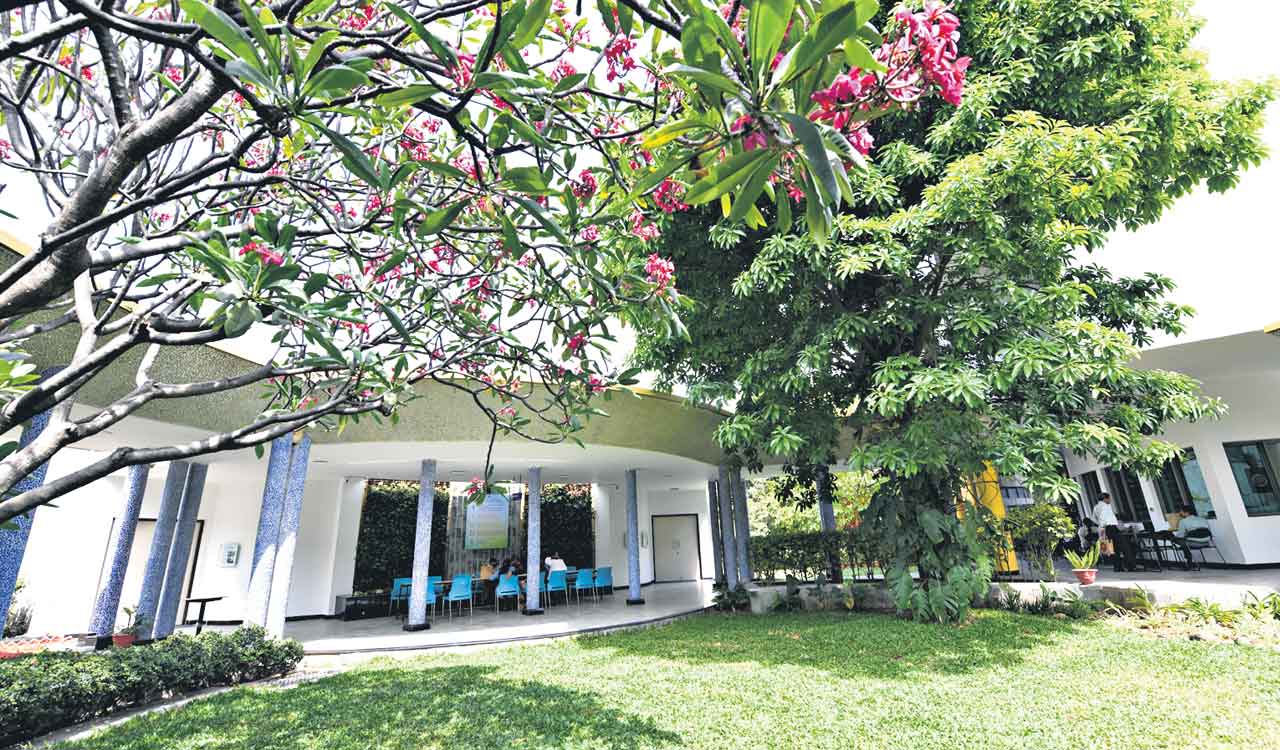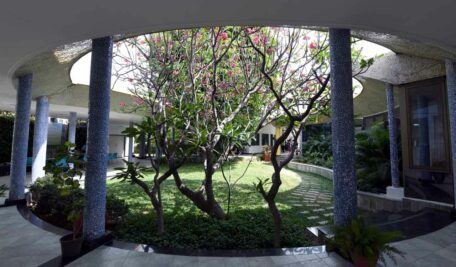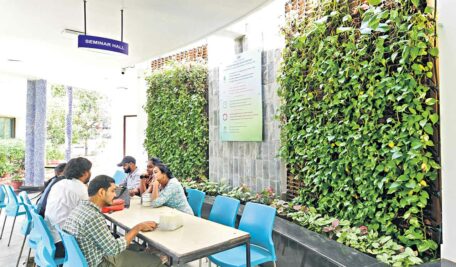In the last two decades, the CII-IGBC campus turned Hyderabad into an epicentre of this green movement and aspires a bigger role in the furthering sustainable movement
Updated On – 5 March 2025, 08:14 PM

The CII-IGBC headquarters at Madhapur (Photo:Anand Dharmana)
Hyderabad: Amid the increasing chaos of urban concretisation, the Indian Green Building Council (IGBC) near the Hitec City in Hyderabad, stands as an island of green hope.
Albeit small, the CII-IGBC campus aspires a bigger role in furthering the sustainable movement with awareness and action towards living with the true elements of nature. In the last two decades, the IGBC turned Hyderabad into an epicentre of this green movement with a wide and varied activities aimed at sowing the seeds for sustainable living and nurturing them to lead India’s net zero journey.
The CII-IGBC headquarters at Madhapur itself stands as an epitome of what the council seeks to propagate. Airy, bright and cosy, the campus is all about the elements of nature.
Deputy executive director, M Anand points out that the building is based on the ancient Indian ethos of Prithvi, Jal, Vaayu, Agni and Aakash, and the conceptualisation of it is a marriage of traditional elements with contemporary technologies. “It’s human-centric and thrives on resources,” he says.

Deputy executive director, IGBC, M Anand
From ancient vaastu guidance in orienting the building to ensuring water and energy efficiency, the campus has open functional spaces that do away with the clutter of electricity – lights, fans, air-conditioners. “We have to tap into the abundance of sunlight available for us,” says Anand and explains that almost 90 per cent of the spaces here are daylight without feeling the need of electricity.
The roof is insulated and the envelope for walls has bricks made of fly ash. During the monsoon, the rain runoff is collected into the water body and towards conserving water, the place boasts of having installed country’s first waterless urinals. Here, the indoors, too, incorporate environmental qualities.
IGBC has shown how energy efficiency can be brought in by adopting green building concepts and designing in consonance with elements of nature. It uses less energy, electricity bills come down and the water usage is reduced.


But then, it’s not just the savings. People in green buildings are much more comfortable and happier. There is certain comfort connectivity for humans with sun, wind and light, says Anand, adding, “and this comfort is lost when you confine them in closed buildings that are powered with lights and air-conditioning”.
The CII-IGBC also has developed ratings for green buildings, which have seen wide acceptance among property seekers, and also for green products, which come with a specially designed logo on them.
The effort is to promote green lifestyle products at home, and the advice is to go for the ones that promise energy efficiency and come with a high star rating. “While purchasing appliances, whether it is light or flush fixture, go for star-rated ones,” says M Anand.
Inside the dwelling, adopt suitable green vegetation instead of ornamental ones. “We have classified 500 native plants, and the resource is available on our website ‘igbc.in’, which can be perused by anyone interested,” he says.






